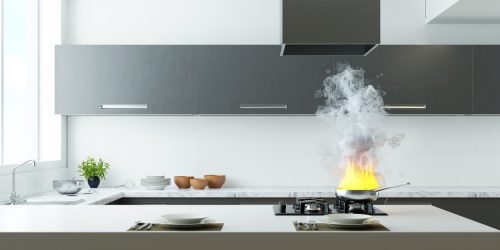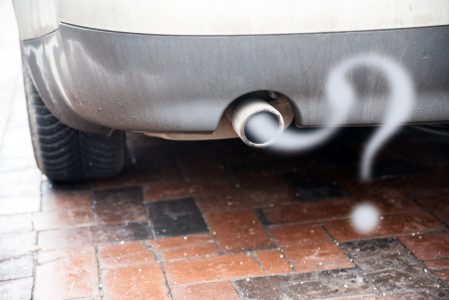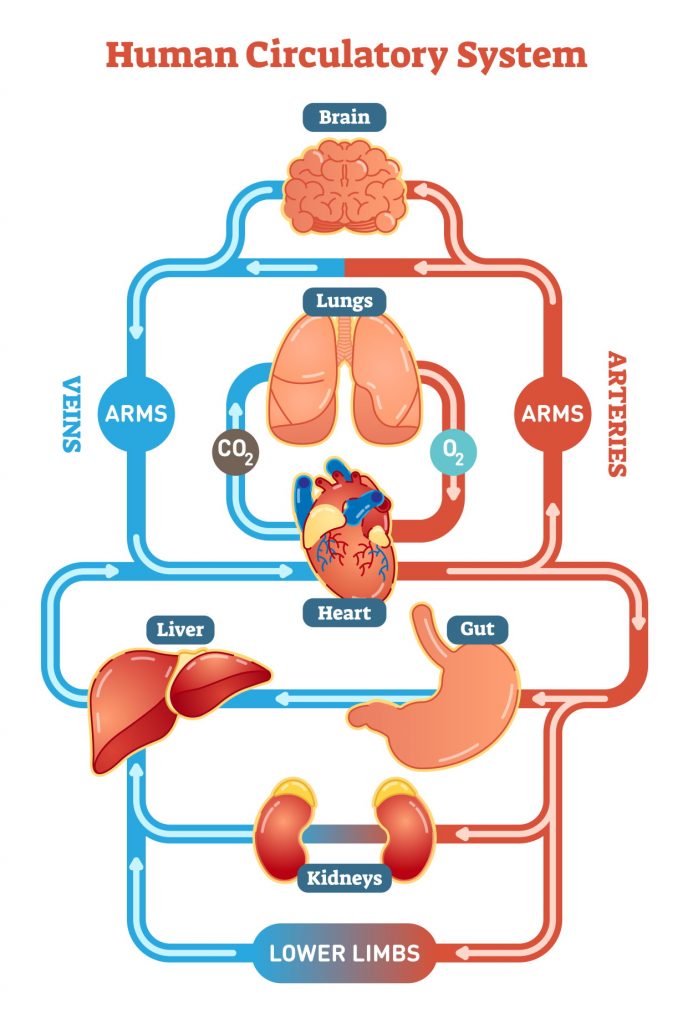We have known for thousands of years that not only is smoke unhealthy, there is a lot more of it in cities where more people are cooking and keeping warm. Even Ancient Rome was infamous for its large clouds of noxious industrial pollution. But it wasn’t until thousands of people were literally suffocated by the pollution on the streets of London one week in 1952 that scientists, researchers, and governments started dedicated resources to studying and solving the impact of air pollution on people and the environment.
The past few decades have seen the proliferation of air quality monitors not just outdoors where the factories are spewing smoke, but indoors as well where we spend 90% of our time. This has led to the realization that activities like cooking can create indoor pollution with a similar impact to the worst outdoor pollution. Making food can create air pollution that goes deep into your body and even harms the environment, and not just when the smoke detector goes off. Read on to see what’s been discovered lately about the effects of bad air quality.

How do cooking fumes and cooking smoke affect indoor air quality?
Old answer: Not available.
New answer: Particles and nitrogen dioxide concentrations can be higher than safe limits when cooking, and gas stoves increase climate change.
Most of us live in homes where at least some cooking is happening, from boiling to frying to baking. Modern gas and electric stoves can apply a lot of heat very quickly, which can lead to more burning. Combined with houses that are not designed to ventilate smoke, there are air quality problems that few of us were aware of.
A recent study by the amazing HOMEChem research team out of the University of Colorado found that cooking Thanksgiving dinner could create indoor conditions that would equate to some of the worst outdoor pollution in the world for as long as five hours– even without directly inhaling burning cooking oil fumes. They found that just activating cooking appliances like hot plates and gas burners can raise particle concentrations more than 1,000 times higher than background levels.
Gas stoves in particular have been found to cause problems. In addition to releasing CO2 when working, they can leak small amounts of natural gas, which is a much more potent greenhouse gas than CO2. Indoors, they can raise nitrogen dioxide– another pollutant- high enough for children who live in homes with them to have similar risk of asthma as children who live with cigarette smokers.

Is there a difference between particle pollution and gaseous pollution?
Old answer: Particle pollution has a greater health impact.
New answer: Particle pollution is unhealthy but gaseous pollution becomes the most unhealthy type of particle pollution.
There is definitely wide consensus among the experts who study air quality that all air pollution is bad but particle pollution is associated with the most health impacts. Compared to gasses like ozone or nitrogen dioxide, particles simply have more mass to make an impact with. Each particle is also composed of a unique blend of different substances with the potential for a wide range of toxic effects. But gaseous pollution is actually very important to watch.
As atmospheric chemists have uncovered more of what makes pollution happen, it’s become clear that particle pollution and chemical pollution are two sides of the same coin. Secondary organic aerosols (SOAs) are particles that form from chemicals like VOCs reacting in the air with sunlight and other pollutants like nitrogen dioxide and ozone. Because these newly formed secondary particles start as individual molecules, they are often very small and cause a majority of cardiovascular and respiratory problems resulting from particle pollution.
One study from 2022 found that releasing VOCs by using commercial cleaning chemicals is similar to having car exhaust pumped into your home. Also, their extremely small size of around 10 nanometers means the 300 nanometer limit of most consumer indoor air quality monitors won’t detect them. When cleaning, consider hot water and regular unscented soap, just those two will cut grease and reduce pathogens.

How deep into your body does air pollution go?
Old answer: Air pollution can affect the heart and lungs.
New answer: Air pollution enters your blood and travels to every organ in your body.
The immediate association with bad air quality is cardiovascular- our heart and lungs. This stands to reason because lungs are in actual contact with the air, so they are most exposed. Impacts on heart health or elevated blood pressure are also logical because the heart needs oxygen from the lungs, so any lung problems are likely to directly contribute.
However research has been coming out showing that air pollution is associated with many major diseases that don’t directly involve the cardiovascular system at all. This suggests that the effects of bad air quality go further than just the lungs and heart. There is consensus that it impacts both male and female reproductive health. A study in England found that living closer to roads contributes to dementia. A different study on US particle pollution found that living in areas with elevated particle pollution increases diabetes risk by at least 20% compared to neighboring areas with lower levels.
The impact on the developing brain is particularly pronounced. A study found children exposed to consistently high levels of particles in utero or during the first year of life are more at risk for autism in addition to respiratory diseases like asthma.
Ultrafine particles are particles smaller than 0.1 micrometer, and are commonly produced by the VOC pollution as we mentioned previously. Ultrafine particles are so small they can move into the blood through the lungs a lot like oxygen does. Airborne particles are powerful oxidizers and often pick up free radicals on their trip through the atmosphere, which makes them highly reactive with a lot of potential to cause damage once inside the body.
There are a lot of ways to remove indoor air pollution, starting with opening the windows when cooking. Always use available exhaust fans above the stovetop. Another layer of air quality protection can be found in a portable air purifier. Be sure to get one that can remove both particles and gaseous pollutants so they are handled from multiple angles. Molekule air purifiers can remove both particles and VOCs from the air.
You may even consider investing in your kitchen’s air quality. If your stovetop fan vents above the stove instead of outside, hiring a contract to install a vent that goes outside will properly remove air pollution. Also be sure the fan is strong enough to remove cooking fumes and particles. Induction stovetops are a little more expensive to buy than electric or gas ranges, but are a little cheaper to run and help to reduce air pollution and greenhouse gasses.
Keep abridged of all the latest in air quality science here at the Molekule blog, and keep an eye on our Facebook, Instagram, and Twitter accounts.







